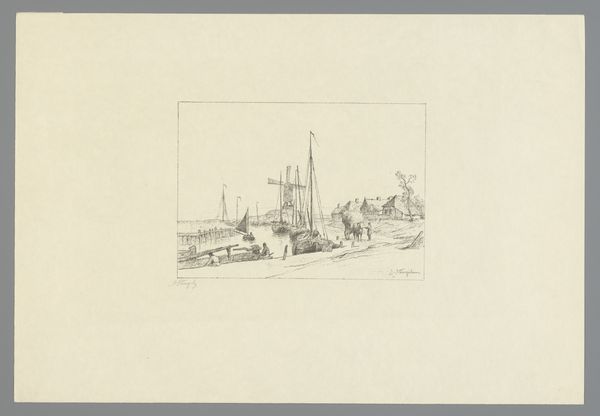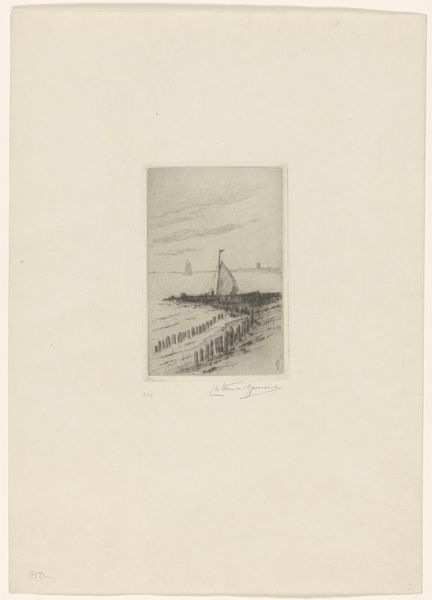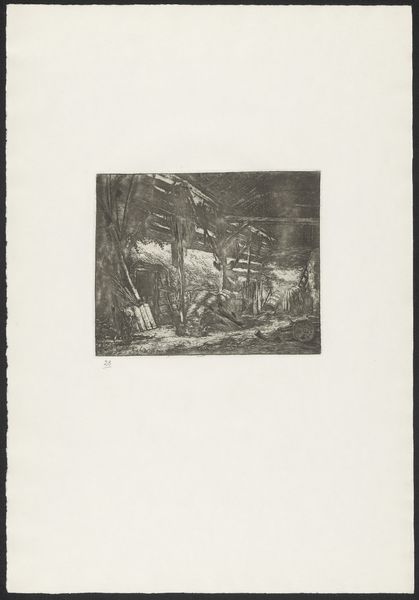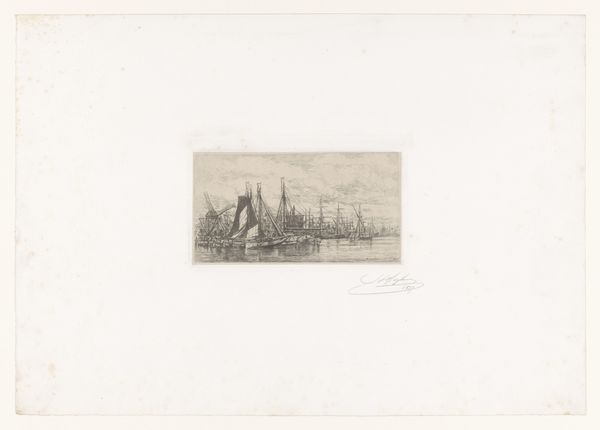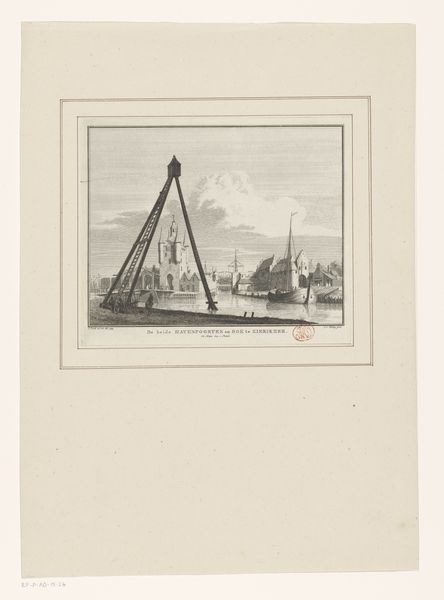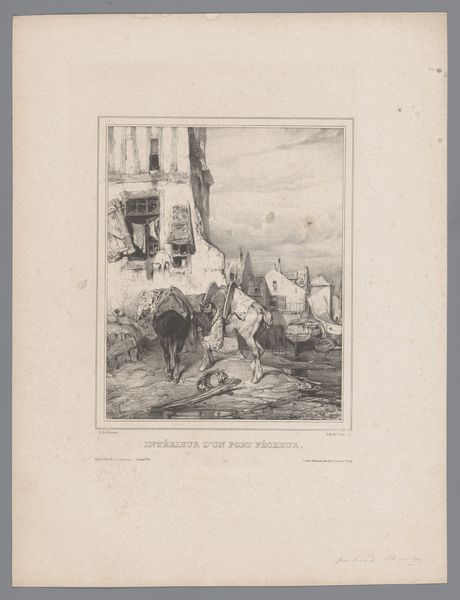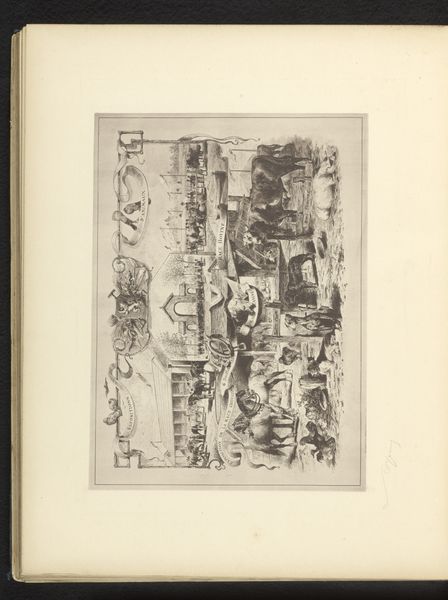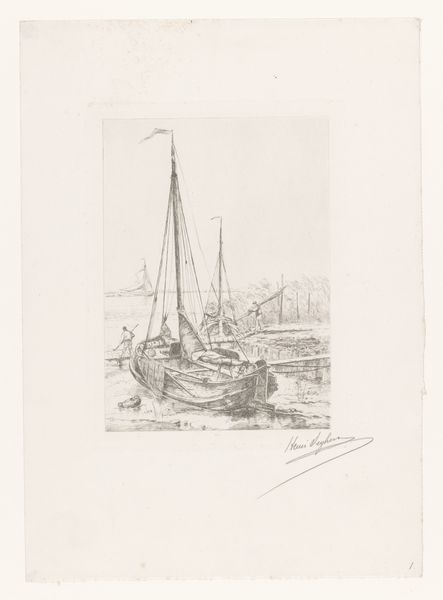
drawing, print, etching
#
drawing
# print
#
etching
#
landscape
#
line
#
cityscape
#
realism
Dimensions: height 269 mm, width 210 mm
Copyright: Rijks Museum: Open Domain
Editor: Here we have Philip Zilcken’s “Ophaalbrug,” an etching from 1888. It's a pretty simple, almost austere, image of a drawbridge over a canal. The greyish tones create this somber mood. What do you see in this piece? Curator: The image speaks volumes through its carefully chosen details and visual syntax. The bridge itself, a drawbridge, carries significant symbolic weight, wouldn't you agree? Editor: How so? It just seems like part of the city infrastructure. Curator: Infrastructure it is, but what does it *do*? It connects, but also has the capacity to divide or obstruct, right? Consider how throughout history, bridges appear as motifs in art, literature, and mythology to signify transitions, thresholds, or reconciliation. This one is captured mid-operation...it appears static and still, but is not, therefore it exists in tension. It poses a psychological question, if you will. Editor: That’s interesting, the bridge as a question mark. But it's also just... an ordinary scene. Curator: True, and that’s the beauty of it! Zilcken elevates the mundane, inviting contemplation. Also, look at how the reflections in the water create a sense of doubling, a mirroring of reality that complicates our understanding of what's solid and what's ephemeral. Do you see it now? Editor: I think so. I appreciate the new perspective, that it's not just a bridge, but something much more layered. Curator: Indeed! It's a visual poem, laden with cultural memory, a testament to the artist's insightful observation. Editor: It certainly gives a lot to think about. Thanks for pointing all of that out!
Comments
No comments
Be the first to comment and join the conversation on the ultimate creative platform.
